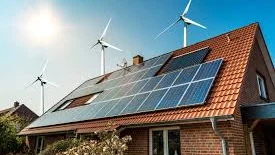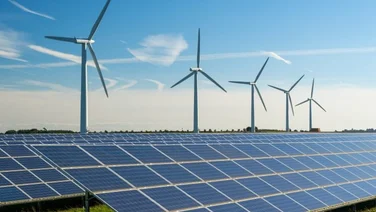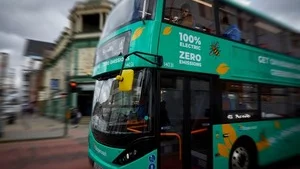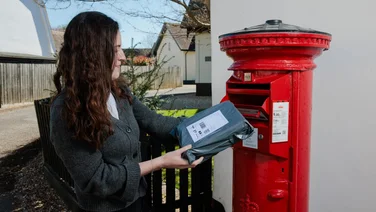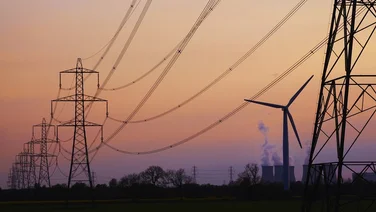✔ Labour has pledged to spend £28 billion a year on its Green Prosperity Plan
✔ The party wants the UK to run on 100% green electricity by 2030
✔ Labour’s Warm Homes Plan will fund energy efficient home improvements
By most estimates, the Labour Party looks set to win the next general election. Having maintained a 20-point lead over the Conservatives for the last 12 months, a recent YouGov MRP poll predicted that Keir Starmer’s party would win a whopping 385 Commons seats and secure a landslide 120-seat majority over the Tories, who would fall back to just 169 seats – less than half of the 349 seats they currently hold.
While it’s still not clear exactly when Prime Minister Rishi Sunak will call a general election, many expect it to be announced at the Conservative Party conference at the end of September, with bookies favouring a potential polling day to fall at some point between October and December 2024.
So, with the prospect of a new government waiting in the wings, it’s time for us to take a closer look at what that might mean for UK environmental policy.
In this article we’ll take a look at what the Labour party has announced so far when it comes to its plans for Net Zero and the environment, including policies on renewable energy, energy efficiency in homes, and green transport.

Summary of Labour’s key environmental policies
In October last year, the Labour party unveiled a list of environmental policies that are likely to make it into its election manifesto at the annual Labour conference this year..
Dubbed the “Green Prosperity Plan”, these policies can also be found summarised in the party’s climate mission statement: “Make Britain A Clean Energy Superpower”.
To summarise, Labour has pledged to spend £28 billion a year on green investments until 2030, by which time they have promised the UK will run on 100% clean energy – a bold statement if ever there was one.
Most of the £28 billion hasn’t been allocated yet, but Labour has promised to spend £6 billion a year on home insulation efforts – the “Warm Homes Plan” –, and £8 billion on various green infrastructure projects.
Labour has also laid out the three main objectives of its Green Prosperity Plan:
- Cutting household bills
- Creating green jobs
- Delivering energy security (with renewables)
What is Labour’s “Warm Homes Plan”?
Labour’s “Warm Homes Plan”, is its strategy for improving the energy efficiency of over 19 million homes across the UK, in a bid to “cut household bills by £1,000 a year”.
The plan has been allocated a budget of £6 billion a year, and will be managed by devolved nations and local authorities.
What does this look like in practice? Well, the rollout could take the form of grant or loan schemes for households, although this hasn’t been exclusively said by Labour leaders.
Here’s how many homes in each region could benefit from the Warmer Homes Plan:
Region | Number of homes to receive energy efficiency upgrades |
|---|---|
Scotland | 1.4 million |
Northern Ireland | Not specified |
Wales | 900,000 |
North West England | 2 million |
North East England | 700,000 |
Yorkshire and the Humber | 1.5 million |
West Midlands | 1.5 million |
East Midlands | 1.2 million |
East Anglia | 1.5 million |
South West England | 1.5 million |
South East England | 2 million |
London | 2 million |
Will the Warm Homes Plan include grants for insulation?
It seems very likely that Labour’s Warm Homes Plan will include grant programmes for insulation, if they win the election of course.
Labour’s climate mission statement uses “loft insulation” as an example of an energy efficient measure the Warm Homes Plan could fund, so it’s a safe bet that the programme will fund measures such as floor insulation and cavity wall insulation as well.
Grants for double glazing are less of a given. Installing double glazing costs a lot, so it’s not always something governments are willing to help fund.
However, there’s no question that double glazed windows are an energy saving home improvement, so we’ll keep our fingers crossed that funding for them will be included in future schemes.
Will the Warm Homes Plan include grants for heat pumps?
Labour hasn’t said much about heat pumps, so the jury is still out on whether there’ll be any additional grants for them if Labour wins.
That said, it’s not out of the question.
The 2019 Labour manifesto did mention heat pumps as a way to decarbonise heating in the UK, and given that Labour has pledged to accelerate the transition to Net Zero, it would make sense for them to extend the Boiler Upgrade Scheme, and roll out new heat pump grants.
Will Labour reinstate the gas boiler ban?
Labour will not reinstate the gas boiler ban if it wins the next election.
The current Tory government had initially said it would ban the sales of new gas boilers starting in 2035, but u-turned on the policy in autumn 2023.
The government’s new goal is to phase out 80% of gas boilers by 2035, but not to ban them outright.
Labour looks set to keep this watered-down policy. In September 2023, a spokesperson for Labour’s shadow climate secretary, Ed Miliband, confirmed that Labour would maintain the Tory’s reversal of the ban and stick to the reduced target if they won the election.

What are Labour’s plans for renewable energy?
Labour plans on massively increasing the UK’s renewable energy capacity so that 100% of electricity comes from renewables by 2030. This will supposedly help cut household bills by £1400 a year.
To achieve this, Labour plans to quadruple offshore wind capacity, double onshore wind, triple solar power, double the green hydrogen target to 10 gigawatts (GW), and back new and existing nuclear projects
How Labour will get all of this done in such a short time isn’t exactly clear.
According to them it will involve cutting down approval time for new energy projects, and upgrading grid infrastructure to accommodate more power from renewables.
What is Labour’s “GB Energy” project?
Labour’s “Great British (GB) Energy” project is a plan to create a publicly-owned renewable energy company.
According to Labour’s climate mission statement, GB Energy will invest independently in emerging renewable energy technologies, such as floating offshore wind, tidal energy, and green hydrogen, as well as co-invest with the private sector in existing renewable energy technologies.
The public energy company would also be involved in the “Local Power Plan”, a scheme to help local authorities and communities build small-scale renewable energy projects, including onshore wind, and community and household solar.
The “Local Power Plan”: Potential for solar panel grants and loans
The Local Power Plan could include solar panel grants, although these will most likely be aimed at community solar projects, rather than private residential installations.
Labour has allocated up to £600 million in funding for local authorities, and up to £4 million in low-interest loans for communities, to help them construct 8 gigawatt’s worth of renewable energy capacity.
What would this look like in practice? Well, residents wouldn’t necessarily get their own solar panels for their houses, but they could still benefit from the energy their local solar farms produce.
In their climate mission statement, Labour suggests that residents in communities who generate renewable energy could get discounts on energy bills. A share of the profits from community energy projects could also then be invested back into the communities that house them.
What are the Labour party’s plans for green transport?
The Labour party hasn’t given us many details on their plans for setting up green transport, which is surprising considering it’s one of the world’s most polluting industries.
Transport is only awarded one short paragraph in Labour’s climate mission statement. There, Labour states it wants to create a “world-class green public transport network”, but doesn’t say much about how it plans to build it.
Given that around 45% of workers in England and Wales drive to work, it’s quite surprising that Labour hasn’t also mentioned encouraging electric vehicle uptake or creating more public charging stations.
The party has, however, pledged separately to reinstate the 2030 deadline for the ban of new petrol and diesel car sales, after Prime Minister Rishi Sunak delayed the ban by five years.
If this tells us anything, it’s that Labour’s strategy for reducing emissions and tackling climate change is still very much in the works. This isn’t surprising, since they have yet to publish their official manifesto ahead of the upcoming election.
Summary
Labour’s current environmental strategy is mainly focused on renewable energy at an industrial level as a way to cut bills and provide energy security first, and reduce emissions second.
It’s not surprising that the focus is on the electorate’s wallet, since many Brits have been feeling the strain of the cost of living crisis, not helped by the cost of energy going up again in January.
Renewable energy is cheaper to produce than fossil fuels, so luckily, what’s good for our wallets is also good for the planet.
So, if Labour wins the next election, we’ll just have to hope that they make good on their Green Prosperity plan.
If you’re curious about other political parties’ environmental stance, you can head over to our page, which we will update in more detail in the run up to the general election.

